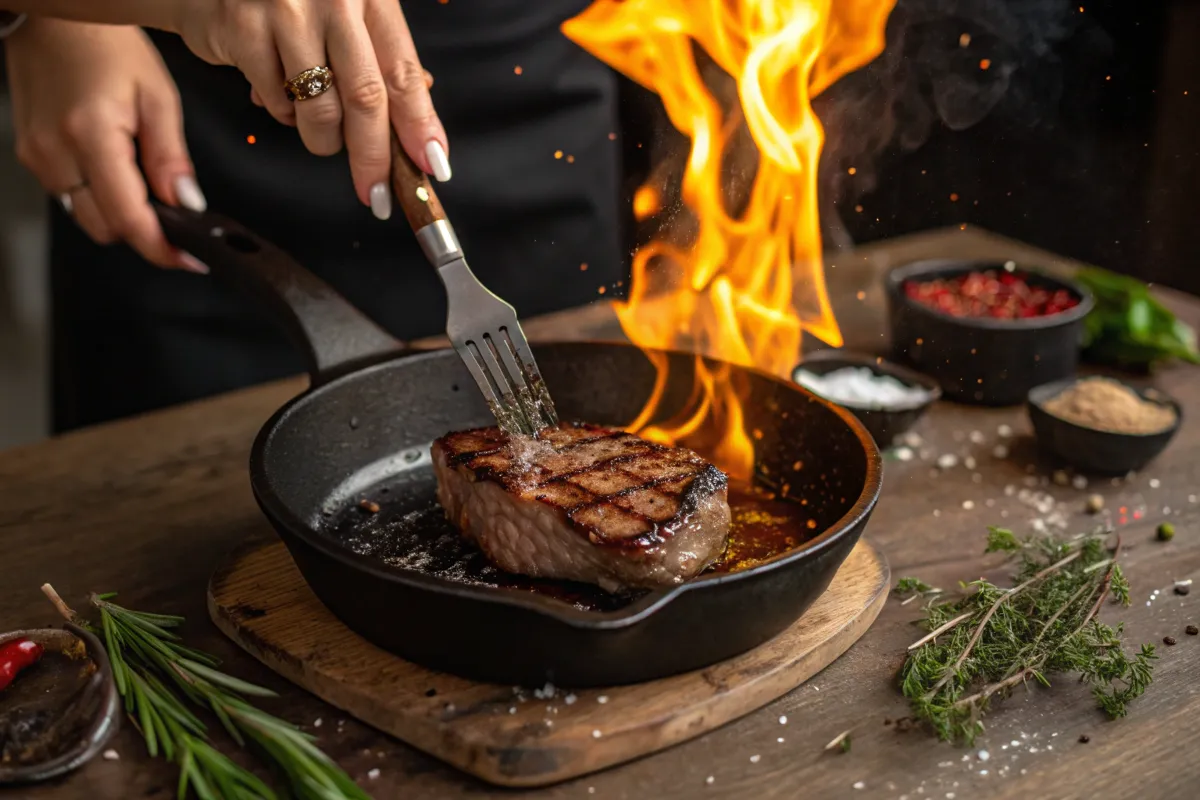Introduction
If you’ve ever browsed a steakhouse menu or visited the butcher’s counter, you might have seen the term Delmonico steak. But what is the Delmonico steak equivalent, and how does it compare to other cuts? This name doesn’t refer to just one specific cut of beef. Instead, chefs and butchers assign it to different cuts depending on their region or preferences. Therefore, understanding these variations helps you choose the best Delmonico steak equivalent for your meal.
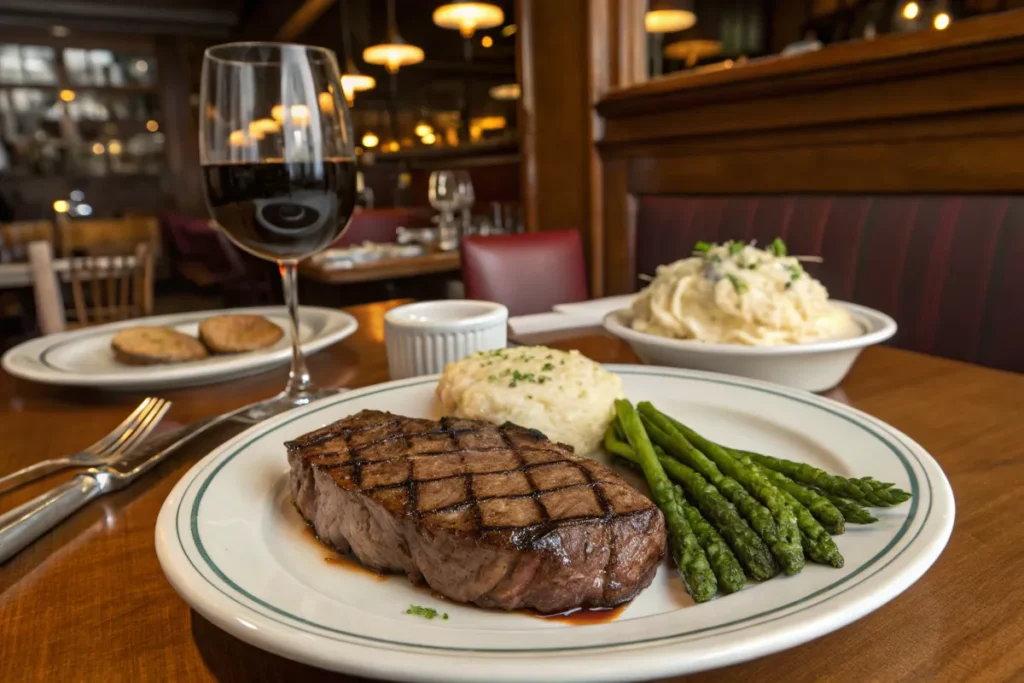
The Delmonico steak takes its name from Delmonico’s restaurant in New York City, where it became famous. People praise this steak for its tender texture and bold flavor. Butchers often compare it to cuts like the ribeye, New York strip, or chuck eye. To learn more about the Delmonico steak, check out this comprehensive guide.
Whether you’re grilling at home or ordering at a restaurant, recognizing the differences between these cuts enhances your dining experience. For instance, the ribeye steak offers similar marbling and flavor to a Delmonico steak equivalent, but both have unique traits. You can explore this comparison in detail by reading which is better: Delmonico or ribeye.
This article explains the Delmonico steak equivalent, its origins, and the cuts it resembles. It also highlights why steak lovers often choose it. If you’re eager to experiment with new recipes, try this smoked meatloaf recipe.
Table of contents
- Introduction
- Defining and Understanding Delmonico Steak Equivalent
- Key Concepts of Delmonico Steak Equivalent
- Expanded Explanation: Choosing and Preparing a Delmonico Steak Equivalent
- Practical Applications: Using Delmonico Steak Equivalent in Everyday Life
- Exploring Variations of Delmonico Steak Equivalent
- FAQ about Delmonico Steak Equivalent
Defining and Understanding Delmonico Steak Equivalent
What Does Delmonico Steak Equivalent Mean?
The term Delmonico steak equivalent refers to any cut of beef that resembles the traditional Delmonico steak in flavor, tenderness, and marbling. However, this label doesn’t point to one specific cut. Historically, Delmonico’s restaurant in New York City served it as a high-quality steak, but they didn’t define its exact cut. Over time, various cuts such as the ribeye, New York strip, and even the chuck eye have been associated with the name.
For example, in some regions, a Delmonico steak equivalent might be a ribeye because of its rich marbling and bold flavor. In other areas, chefs or butchers might use a New York strip or top sirloin, especially when focusing on tenderness. To learn more about the origins of the Delmonico steak, check out this detailed article.
Why Is the Delmonico Steak Equivalent Important?
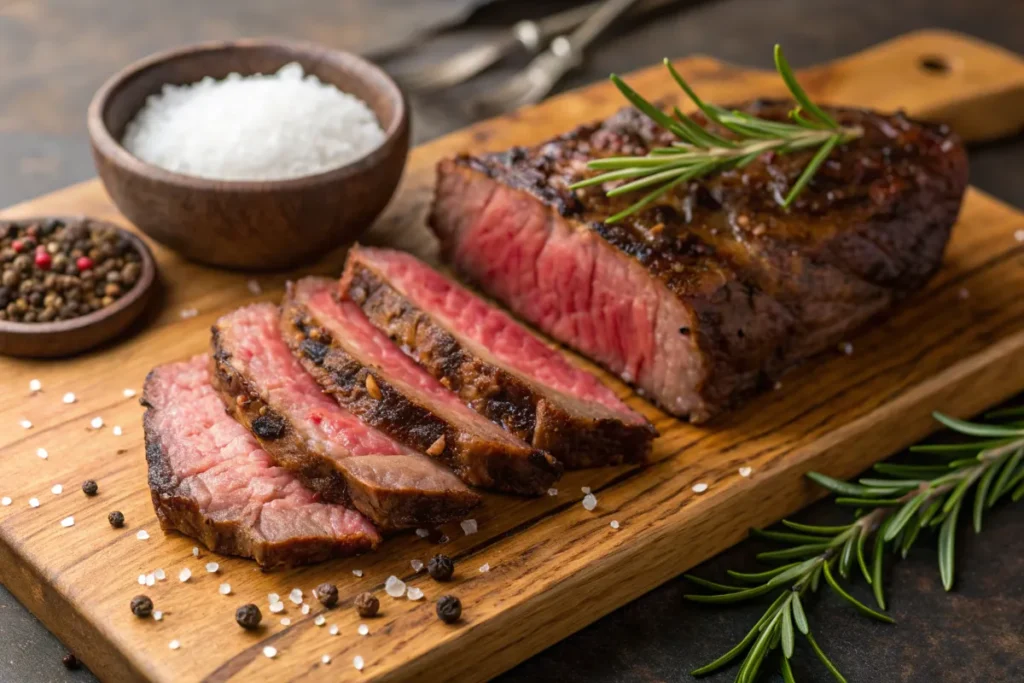
Understanding the Delmonico steak equivalent is essential for steak lovers who want to recreate its unique qualities. The Delmonico steak represents more than just a cut of beef—it symbolizes indulgence, premium quality, and a satisfying dining experience. Knowing which cuts serve as equivalents allows you to enjoy this experience, even if your local butcher doesn’t use the term.
For instance, choosing a ribeye as a Delmonico steak equivalent ensures you get excellent marbling and a rich, beefy flavor. Opting for a New York strip delivers a firmer texture but retains a satisfying bite. Regardless of the cut, preparing your steak correctly enhances its taste. For helpful preparation tips, explore is Delmonico a good cut of steak.
Key Concepts of Delmonico Steak Equivalent
The Origins of the Delmonico Steak
The Delmonico steak traces its roots back to the early 19th century at Delmonico’s restaurant in New York City. The restaurant earned its reputation for serving premium cuts of beef to discerning customers. The Delmonico steak wasn’t tied to a single cut but represented a commitment to quality and flavor. Chefs selected tender, well-marbled cuts to deliver an unforgettable steak experience.
Over time, the term became synonymous with indulgence. Today, the Delmonico steak equivalent typically describes a cut that mirrors those original qualities. Depending on the region, this could mean a ribeye, a top sirloin, or even a chuck eye steak.
Common Cuts Used as Delmonico Steak Equivalents
Several cuts of beef often serve as a Delmonico steak equivalent due to their flavor and texture:
- Ribeye Steak: Known for its exceptional marbling, the ribeye is a frequent choice. Its rich fat content creates a juicy, flavorful steak when cooked.
- New York Strip: With a firmer texture and leaner profile, the New York strip still delivers bold beef flavor.
- Chuck Eye Steak: Sometimes referred to as the “poor man’s ribeye,” the chuck eye offers a budget-friendly alternative with similar marbling.
- Top Sirloin: While leaner than other options, the top sirloin is tender when cooked correctly and boasts a robust taste.
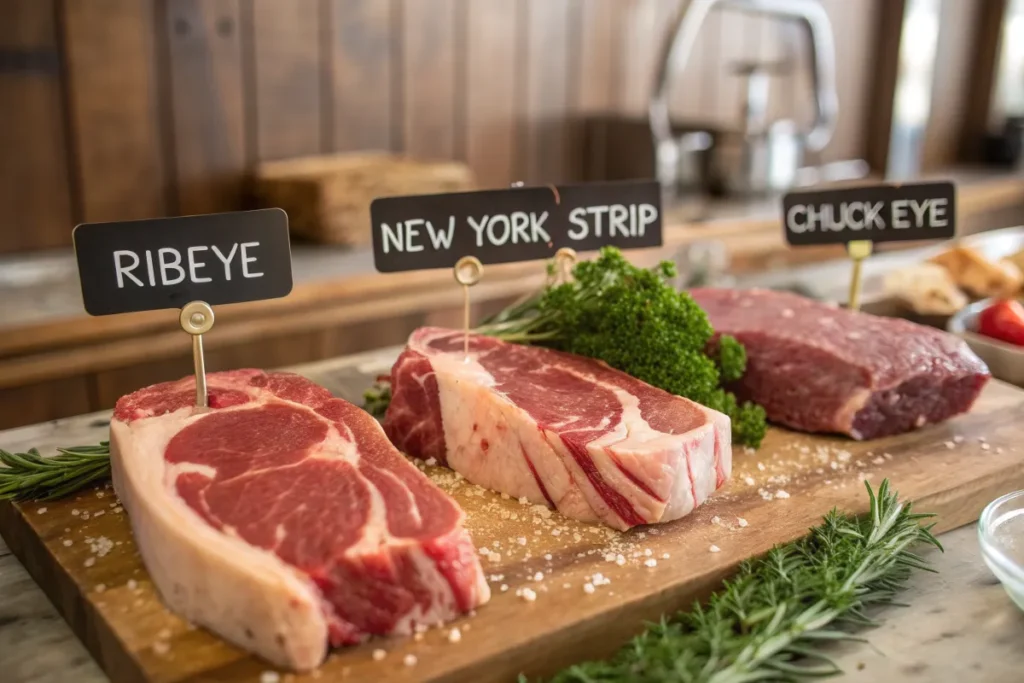
Each of these cuts has unique qualities, but all can deliver a satisfying steak dinner when prepared properly.
Expanded Explanation: Choosing and Preparing a Delmonico Steak Equivalent
How to Choose the Right Delmonico Steak Equivalent
Selecting the ideal Delmonico steak equivalent can elevate your dining experience. Here’s a detailed look at what to consider:
- Marbling
The quality of marbling is crucial. Marbling refers to the white streaks of fat within the meat, which melt during cooking to create juiciness and enhance flavor. For an authentic Delmonico experience, aim for cuts like ribeye or chuck eye, known for their excellent marbling. New York strip also offers a balance of marbling and leanness. - Thickness
A thick steak not only looks impressive but also cooks more evenly. Thinner cuts may overcook quickly, resulting in a dry texture. A thickness of 1 to 1.5 inches ensures the steak retains its juiciness while achieving a perfect sear on the outside. - Flavor Preference
If you crave bold, beefy flavors with a buttery finish, the ribeye is a top choice. For a leaner yet flavorful steak, opt for the New York strip. Budget-conscious cooks may prefer the chuck eye, which offers a similar taste profile to the ribeye but at a lower cost. - Cooking Method Compatibility
Different cuts perform best with specific cooking methods. Ribeye and chuck eye shine on the grill due to their fat content, which prevents drying out. New York strip and top sirloin work wonderfully in a cast-iron skillet, where the heat creates a flavorful crust.
Steps to Prepare a Delmonico Steak Equivalent
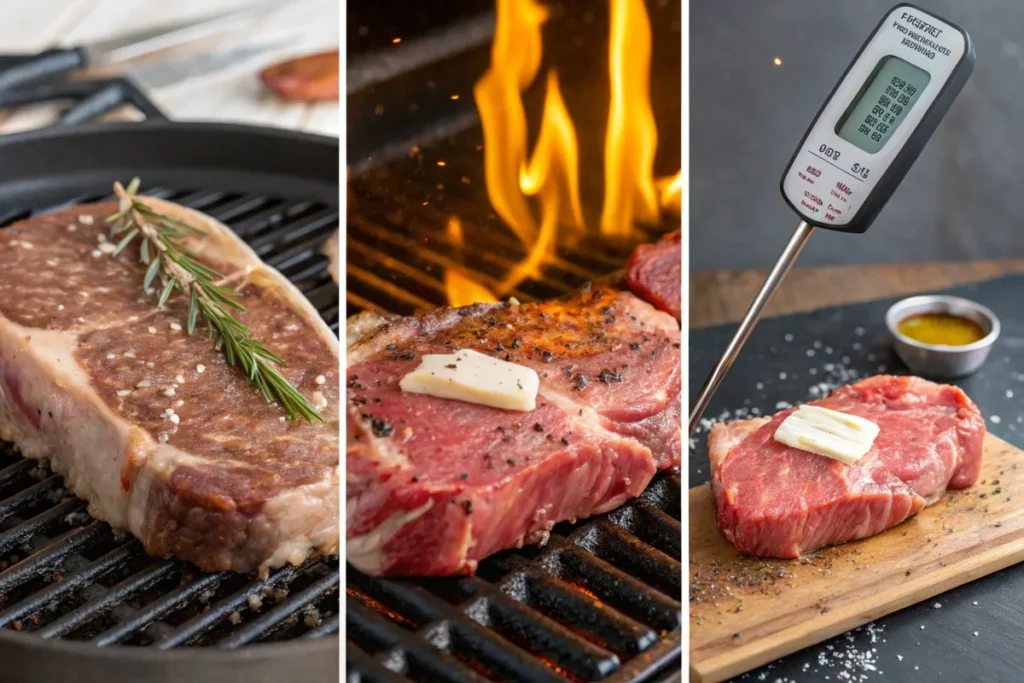
Preparing a Delmonico steak equivalent is an art, but anyone can master it with a few simple steps:
- Season Generously
Start with a generous seasoning of salt and pepper. Don’t be shy—seasoning forms the foundation of flavor. For added depth, rub in garlic powder, paprika, or your favorite spice blend. Let the steak sit at room temperature for 20-30 minutes before cooking. This step ensures even cooking by allowing the meat to lose its chill. - Preheat Your Cooking Surface
Whether you’re grilling, pan-searing, or broiling, preheat your cooking surface to high heat. A hot surface creates the perfect sear, locking in the juices and forming a flavorful crust. On a grill, aim for medium-high heat; in a skillet, heat until the oil shimmers. - Sear and Cook to Perfection
Sear the steak on high heat for 2-3 minutes per side to develop a golden-brown crust. Once seared, reduce the heat to medium or move the steak to indirect heat. Continue cooking until the steak reaches your desired level of doneness.- For medium-rare: Cook until the internal temperature reads 130-135°F.
- For medium: Aim for 140-145°F.
- For medium-well: Cook to 150-155°F.
- Rest the Steak
After cooking, transfer the steak to a cutting board and tent it with aluminum foil. Let it rest for 5-10 minutes. Resting is vital because it allows the juices to redistribute throughout the meat, ensuring a moist and flavorful bite. - Finish with Flair
Add a finishing touch to elevate your steak. Top it with a pat of herb butter or drizzle it with a balsamic glaze. These small details enhance the overall flavor and presentation.
Practical Applications: Using Delmonico Steak Equivalent in Everyday Life
How to Use Delmonico Steak Equivalent in Recipes
The Delmonico steak equivalent is a versatile cut that works beautifully in various dishes. Here are some practical ways to use it:
Classic Steak Dinner
To begin with, serve the steak with traditional sides like baked potatoes and steamed vegetables. Moreover, a simple seasoning of salt, pepper, and garlic powder lets the beef’s natural flavor shine.
Steak Salad
Next, slice your cooked Delmonico steak into thin strips and layer it over a fresh salad. Add greens like arugula or spinach, cherry tomatoes, red onions, and blue cheese crumbles. Finally, drizzle with a balsamic vinaigrette for a light yet satisfying meal.
Steak Sandwich
Additionally, you can use leftover slices of Delmonico steak to make a hearty sandwich. Simply layer the steak with caramelized onions, sautéed mushrooms, and melted provolone cheese on a toasted baguette.
Stir-Fry
Alternatively, cut the steak into bite-sized pieces and use it in a stir-fry with fresh vegetables. Toss everything in a savory soy-ginger sauce for a quick and flavorful meal.
Breakfast Steak
Finally, pair your steak with eggs for a protein-packed breakfast. Serve it alongside sunny-side-up eggs and hash browns for a classic start to the day.
Creative and Unique Applications
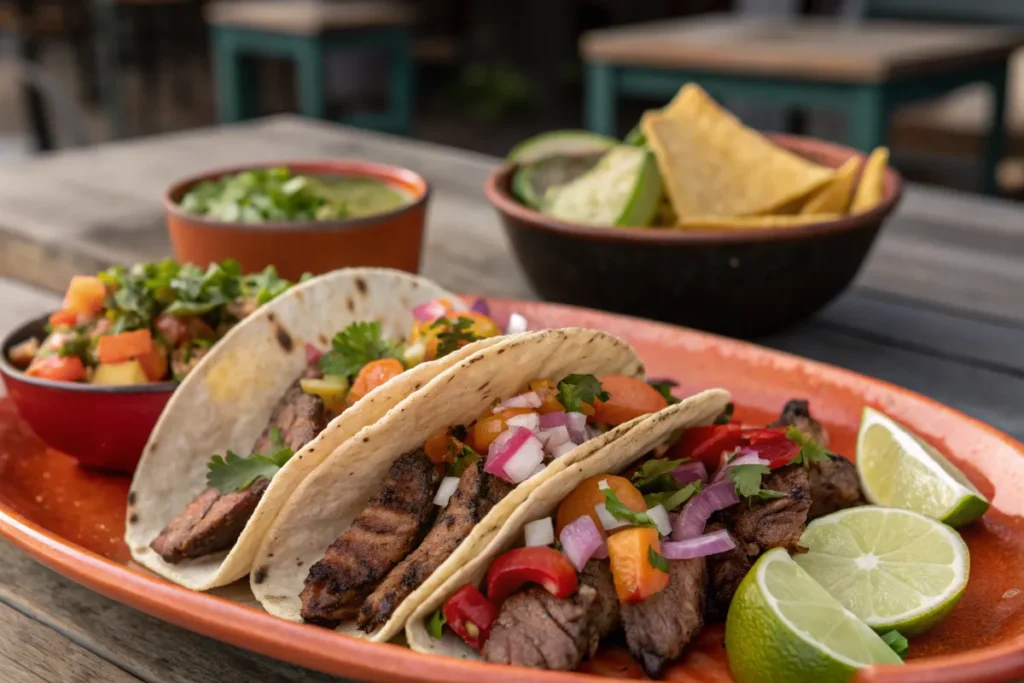
The Delmonico steak equivalent also lends itself to more innovative recipes. Experiment with these ideas:
- Steak Tacos
Marinate the steak in a smoky chipotle sauce, grill it, and slice it into thin strips. Serve in warm tortillas with fresh cilantro, lime juice, and avocado slices. - Steak Skewers
Cut the steak into cubes and skewer it with vegetables like bell peppers, onions, and zucchini. Grill the skewers for an easy and crowd-pleasing appetizer or main course. - Steak Pasta
Add seared steak strips to a creamy Alfredo or tomato-based pasta. The rich beef flavor pairs perfectly with the hearty sauce. - Steak Pizza
Use thin slices of steak as a topping for homemade pizza. Combine it with ingredients like blue cheese, arugula, and a drizzle of balsamic glaze for a gourmet twist.
Cooking Tips for Everyday Use
- Prep Ahead
Season the steak and let it rest in the refrigerator for a few hours or overnight. This allows the flavors to penetrate the meat. - Batch Cooking
Cook multiple steaks at once and store leftovers for quick meals. Sliced steak keeps well in the fridge for up to three days. - Portion Control
Cut large steaks into smaller portions before cooking. This makes them easier to cook evenly and allows for more manageable servings. - Experiment with Sauces
Pair your steak with sauces like chimichurri, peppercorn cream, or red wine reduction for added depth and variety.
Exploring Variations of Delmonico Steak Equivalent
Adaptable Variations for Different Uses
The Delmonico steak equivalent comes in several variations depending on the cut used and how it’s prepared. Here are a few adaptable options:
- Ribeye as a Delmonico Steak Equivalent
Ribeye is a popular choice for its excellent marbling and rich flavor. This cut performs exceptionally well on a grill, making it perfect for summer cookouts. For a different twist, try dry-rubbing it with smoked paprika and garlic powder before cooking. - New York Strip
If you prefer a leaner steak with a firmer texture, the New York strip is a great option. This cut is versatile and pairs well with bold sauces like peppercorn or Béarnaise. It also works well for pan-searing and finishing in the oven. - Chuck Eye Steak
Known as the “poor man’s ribeye,” the chuck eye offers similar marbling at a fraction of the cost. It’s an excellent alternative for budget-friendly meals. This cut benefits from marinating to enhance tenderness and flavor before grilling or broiling. - Top Sirloin
While leaner than other cuts, top sirloin is tender and flavorful when cooked to medium-rare. It works well in stir-fries, steak salads, or sliced thin for sandwiches.
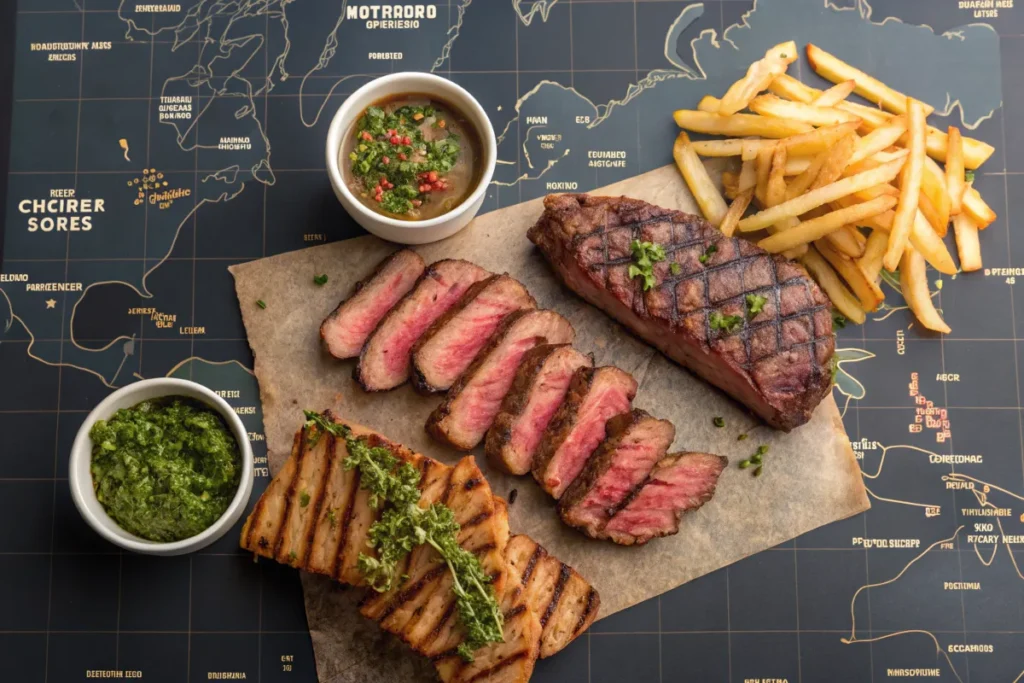
Global and Regional Variations
The Delmonico steak equivalent also varies across regions and cultures, offering unique interpretations:
European Variations
For instance, in Europe, the equivalent might be a ribeye or entrecôte, often served with rich sauces like demi-glace or herbed butter. Furthermore, in France, steak-frites pairs a tender steak with crispy fries for a classic dish.
South American Interpretations
Similarly, in countries like Argentina, a cut similar to Delmonico may be found in asado (barbecue) traditions. Ribeye or sirloin cuts are often seasoned simply with salt and cooked over an open flame to preserve their natural flavor.
Asian Influences
Meanwhile, in Asian cuisine, thinly sliced steak cuts are used in dishes like Korean barbecue or Japanese yakiniku. The emphasis here is on enhancing the beef’s natural flavor with light marinades or dipping sauces.
American Regional Styles
Finally, in the United States, Delmonico steak equivalents can vary by state. For example, some regions favor grilled ribeye, while others prefer pan-seared New York strip with a crust of cracked pepper and sea salt.
FAQ about Delmonico Steak Equivalent
A Delmonico steak equivalent is a cut of beef that shares similar tenderness, marbling, and flavor to the traditional Delmonico steak. Common equivalents include ribeye, New York strip, and chuck eye steaks.
The original Delmonico steak was not tied to a single cut. Instead, it was selected based on the best quality beef available at the time, leading to variations in what is now called a Delmonico steak.
Ribeye is the most frequently used cut for a Delmonico steak equivalent due to its rich marbling and flavor, closely matching the characteristics of the original.
No, a Delmonico steak can be either boneless or bone-in. The choice often depends on the restaurant or butcher’s interpretation.
Cook it on high heat, such as grilling, broiling, or pan-searing, to achieve a flavorful crust. Let it rest after cooking to retain its juiciness.
Ribeye has excellent marbling, which melts during cooking to create a juicy, flavorful steak, closely mirroring the qualities of a traditional Delmonico.
Yes, cuts like chuck eye or top sirloin can serve as affordable alternatives. With proper seasoning and preparation, they can deliver a satisfying steak experience.
Conclusion: Delmonico Steak Equivalent
The Delmonico steak equivalent embodies more than just a specific cut of beef—it represents quality, flavor, and tradition. Whether you choose a ribeye, New York strip, or chuck eye, understanding the origins and variations of this steak can enhance your dining experience. Each equivalent offers unique qualities, from the marbling of a ribeye to the firm texture of a New York strip.
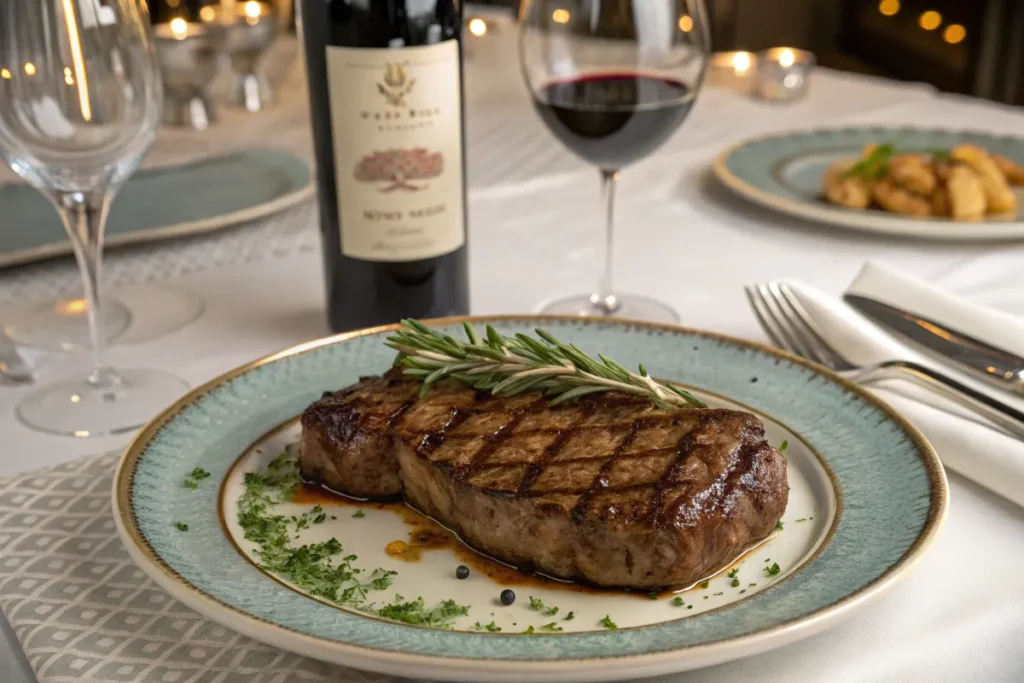
By selecting the right cut, using proper cooking techniques, and experimenting with seasonings, you can enjoy the richness and tenderness that made the Delmonico steak a culinary icon. Whether you’re cooking at home or dining out, the knowledge of what makes a perfect Delmonico steak equivalent ensures a meal that’s both delicious and memorable.
Explore these options, try new recipes, and discover your favorite way to enjoy this timeless steak!

